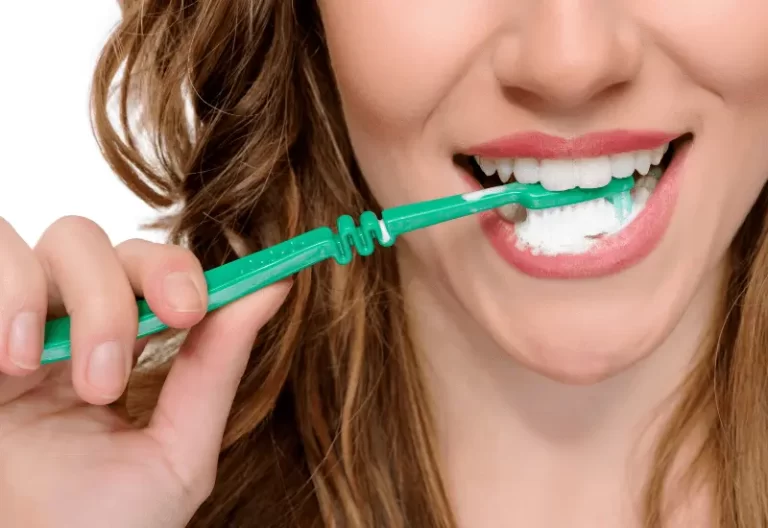- clinic@fpmedicalcenter.com

The Right Way to Brush Your Teeth
Introduction:
First of all,
Maintaining general health requires taking good care of your dental health. Brushing your teeth is one of the basic dental hygiene procedures. But there’s more to it than merely tossing the toothbrush from side to side there’s science and art involved. We’ll go into the necessary methods, equipment, and habits for maintaining healthy teeth and a bright smile in our extensive guide on brushing your teeth.
Knowing the Basics:
Let’s start by understanding the fundamentals of teeth brushing before delving into the procedures. Brushing your teeth is advised at least twice a day, ideally in the morning and right before bed. For best results, the American Dental Association (ADA) advises using fluoride toothpaste and a toothbrush with soft bristles.
Appropriate Tools for the Job:
The first step to brushing well is selecting the appropriate toothbrush. Over time, damage to your gums and enamel can be avoided by using soft-bristled brushes. Well-known for their effectiveness, electric toothbrushes can also be a fantastic option, particularly for people who have trouble using a manual toothbrush. It’s important to replace your brush head or toothbrush every three to four months, or sooner if you see wear on the bristles.
Which Toothpaste Is Best?
Choosing the correct toothpaste is just as crucial. Seek for one that has fluoride in it, a mineral that is essential for strengthening enamel and preventing tooth decay. Different formulas are offered to address particular demand such gum health, whitening, or sensitivity. See your dentist to find out which toothpaste is best for you.

Brushing Methods:
- The Two-Minute Rule: Make it a point to clean your teeth for a minimum of two minutes each time. This guarantees sufficient plaque removal and careful cleaning. Spend thirty seconds on each of the four quadrants that comprise your mouth: upper right, upper left, lower right, and lower left.
- Maintain the Correct Angle: Position your toothbrush so that it is 45 degrees away from your gum line. This promotes general gum health and helps target the region where your teeth and gums converge. It also helps avoid gum disease.
- Soft Circular strokes: Make soft circular strokes instead of back and forth scrubbing. Concentrate on a few teeth at a time, making sure to thoroughly clean every tooth’s surface. The inside surfaces of your front teeth and the back molars are two difficult-to-reach places that require extra care.
- Remember to Take Care of Your Tongue and Gums: These tissues contain bacteria that can cause foul breath and other dental problems. To get rid of microorganisms, gently brush the roof of your mouth and your tongue. After that, flossing can assist in efficiently cleaning in between teeth where your toothbrush is unable to.
- Rinse, Don’t Spit: Thoroughly rinse your mouth with water after brushing. Mouthwash should not be used right after brushing since it can remove the toothpaste’s concentrated fluoride. If you wish to use mouthwash, wait for at least thirty minutes.
Extra Advice for Ideal Dental Health:
- Schedule routine dental examinations: Get professional cleanings and check-ups to detect possible problems early.
- Flossing Is Crucial: Make flossing a daily habit to get rid of food particles and plaque in between your teeth.
- Hydrate and Eat a Balanced Diet: For general oral health, consume lots of fluids and eat a diet high in fruits, vegetables, and dairy products.
Conclusion:
Mastering the right way to brush your teeth involves more than just a hasty scrubbing. By adopting proper techniques, using the right tools, and incorporating good oral habits, you can ensure that your smile remains bright and your teeth stay healthy. Remember, your oral health is an investment in your overall well-being, so make it a priority.
Our Expert Dentist

Dr. Fasmiya Shariff
- Primary Speciality : General & Cosmetic Dentist
- Experience : 4+ Years
General & Cosmetic Dentist
- Dr. Fasmiya Wasim Shariff is a general and cosmetic dentist, with a work experience of more than 4 years in the UAE (Dubai), and 3 years in INDIA.
- Positive, optimistic, energetic, decision maker, team worker, fast learner.
- creative, responsible, resilient and professional.
- Digital Smile design and smile makeover, using veneers and crowns and gingival management (gingivectomy and crown lengthening), preparing, temporizing and cementing all types of veneers depending on the patients’ needs.
The Silent Side Effects: Hot Cancer and Its Treatment Affects your Oral Health. Read Now.
Quick Contacts
- Phone : +971 50 395 3762
- Email : clinic@fpmedicalcenter.com
- 303, Al Wasl Building, In front of Dubai Mall & Burj Khalifa Metro Station, Dubai
- Country : UAE
- Copyright 2024 - First Priority Medical Center - All Rights Reserved.

Leave a Reply